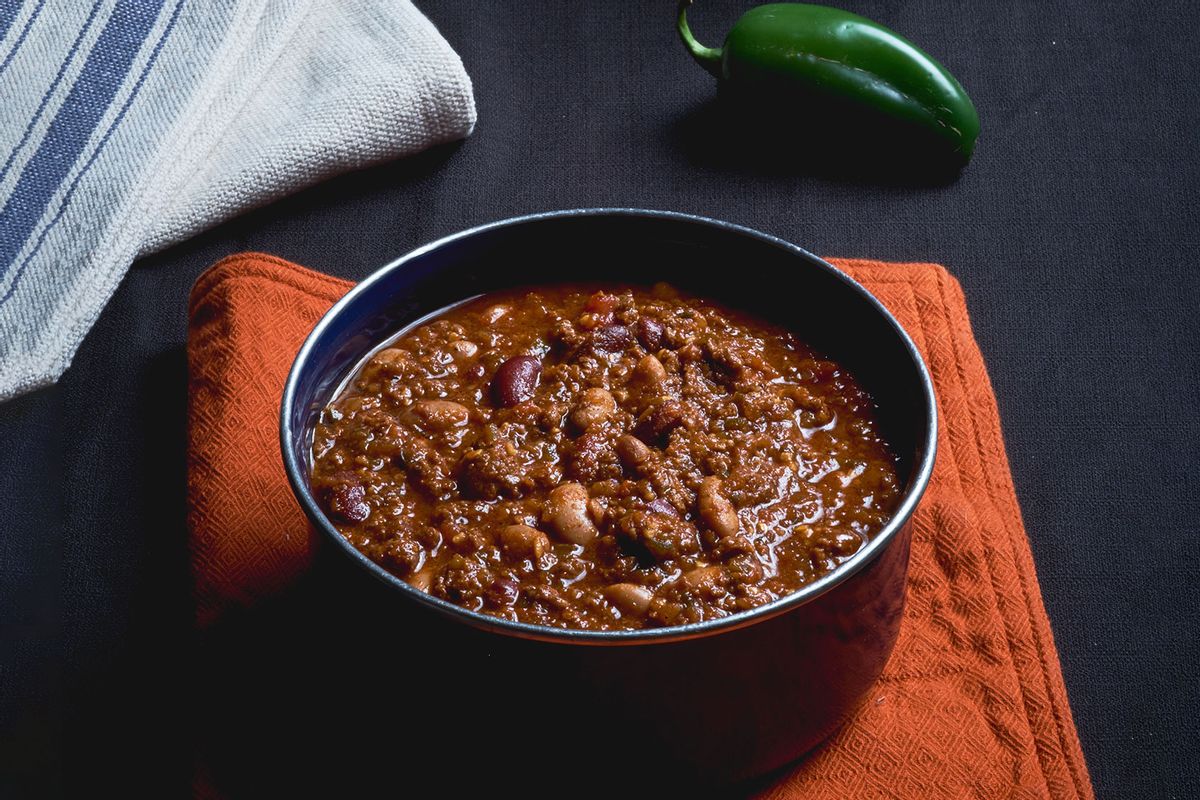On a day of -38 temperatures and frigid winds gusting across the Northern Great Plains, Mariah Gladstone fed the wood stove at her home in Montana as she shared details about her recent professional passion project. The founder of online Indigenous cooking show Indigikitchen has recently released a toolkit that, with funding from nonprofit Montana No Kid Hungry, is designed to help school food service directors figure out how to incorporate more Indigenous foods into their menus. Gladstone believes it's an important step in getting more culturally appropriate ingredients into meals at Native schools throughout the U.S.
"I really want to look at how can we reincorporate local ancestral foods in ways that makes sense in our daily lives, and obviously school meal programs are a huge place for that conversation to occur," she said. Although her toolkit is state-specific, as is a similar one put out by the Wisconsin Department of Public Instruction, "What I would really love to do is create a living resource so food service directors across the country who have incorporated Native foods [into recipes] can contribute those to a library of recipes that other food service directors are able to use."
Montana has seven reservations (and one "landless tribe") that are home to 78,000 members of 12 Indigenous communities, including Sioux, Chippewa Cree, and Salish (Gladstone is Blackfeet and Cherokee). Food insecurity rates in these places are high, as they are in other Native communities; one reason behind the recent push towards greater Indigenous food sovereignty is to counteract this and other health challenges that come along with what Gladstone calls "a Western European bias for a lot of the current nutritional guidelines that has also been heavily influenced by certain food industry lobbies."
The U.S. Department of Agriculture, which in past years has assisted such attempts with, for example, the development of a manual for helping ranchers transition to bison from cattle, has also announced new initiatives to promote Native food sovereignty. These include food foraging and seed-saving resources, as well as $2.2 million to extend "self-determination demonstration projects" to allow for tribally-procured foods within the Food Distribution Program on Indian Reservations (FDPIR); this replaces SNAP (formerly food stamp) benefits in places without easy access. According to Heather Dawn Thompson, director of USDA's Office of Tribal Relations, "Tribal nations have been really clear with Secretary [Tom Vilsack] and USDA that they see food security [intertwined with] food sovereignty and that they want to not be dependent upon external entities and agencies providing food to them, but to be able to grow that food locally and provide for themselves."
Her office is also in informal conversation with Gladstone and said it is "supportive" her work to "increase Indigenous foods in school lunch programs." Practically, this support might include providing information, resources and reducing barriers to getting more Indigenous foods into more meal programs. "We are trying to be respectful of, blue corn and mutton are very important in the Southwest, and wild rice and white fish in the Great Lakes, and bison and venison and wild turnips in the Great Plains, and moose and seal and salmon in Alaska and the northwest," Thompson said. "One of the challenges is that it's multifaceted; how do we make sure that the programs are flexible enough to incorporate the regionality of these Indigenous foods?"
With USDA newly challenged by Secretary Vilsack to reimagine its work from an Indigenous perspective, said Thompson, Gladstone hopes to see better, perhaps even quicker growth for her and others' so far "scrapped-together" efforts — which includes building off some foundational local food work already accomplished by Farm to School. "Having [USDA] interested and invested in this conversation is huge because that immediately helps build momentum and gather interest and reduce hurdles," she said.
On her website, Gladstone offers six recipes, for patties made of wild rice, turkey and cranberry, Pumpkin Lentil Soup, and Bison Chili, for example — simple, delicious dishes in proportions that can feed 50 kids in a cafeteria setting. Even though many Native foods can be, and are, served in school meals, the toolkit shows where the complexity of incorporating them lies. In the guide, Gladstone, who said she uses her bachelor's degree in engineering "just to calculate USDA requirements," explores how to properly credit calories and nutritional value for ingredients like buffalo berries or salmon, and to plan and standardize menus — in addition to finding local traditional foods in the first place.
For example, "Stinging nettle plants can be cooked like spinach and they taste basically like sweet spinach. But you have to do your own work on how they're credited, to say this counts for one half-cup . . . as part of the vegetable requirement, specifically in the dark green category," Gladstone explained.
Another, slightly trickier example: the National School Lunch Program (NSLP) "has a requirement for whole grains, but a lot of Indigenous communities are not eating whole grains in the way that's defined by USDA. Rather, there was a lot more consumption of starchy root vegetables, so being able to credit things like camas root or prairie turnips as whole grains adds more flexibility into that whole grain requirement because you're seeing a very similar macronutrient breakdown."
Trickier still are substitutions in places around the Arctic Circle, with their short growing seasons and few vegetables. People there "were eating a lot of organ meat to get a lot of those vitamins and nutrients — that's not something that we do in school meal programs — so there's an interesting balance of navigating what the USDA requirements are with how Indigenous people traditionally got their nutrients, and it's hard to change the requirements for crediting in that way."
Thompson acknowledges these intricacies. "There are of course nutrition guidelines. There are food buying guidelines, which outline the nutritional aspects of all the foods that are served to help guide schools in what they can and can't serve. And there are the inspection requirements . . . to make sure that our children are eating safe foods," she said. "All of those were designed without fully thinking through how different Indigenous foods are nutritionally, and how Indigenous foods are slaughtered or harvested differently." In process now is a "rethinking" of challenges and requirements that don't require statutory changes by Congress. "None of it's complete, but we're in a very different place than we were 10 years ago," Thompson said.
The biggest menu change, which would require Congressional interference, has to do with the milk requirement. About 80% of Indigenous individuals are lactose intolerant so, "We got calcium through other sources — bone broth, wood ashes, things like that," said Gladstone. "But if I were to say that you had to have a teaspoon of wood ashes with every meal, even though that calcium is the same as a cup of milk and it's more absorbable by your body, people would freak the heck out."
Other hurdles remain to more broadly Indigenizing school meals, such as giving greater support to foodservice staff in transitioning to new ingredients and building up local processing facilities to keep local food truly local rather than shipping it off to be sold back to communities at a higher cost. But Gladstone's still optimistic both about what's so far been accomplished in making school meals more Native food-centric, as well as the future of her mission. School nutrition directors are asking, "What Native foods should we be adding to our lists? What do we need to get the nutrition information on? How do we put this in our resource so that everyone knows how it can be credited?" Gladstone said. "That's really exciting."




Shares